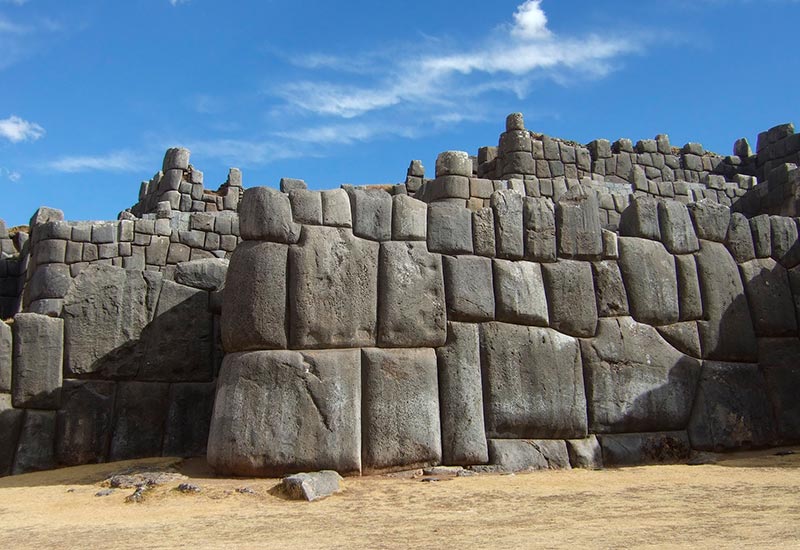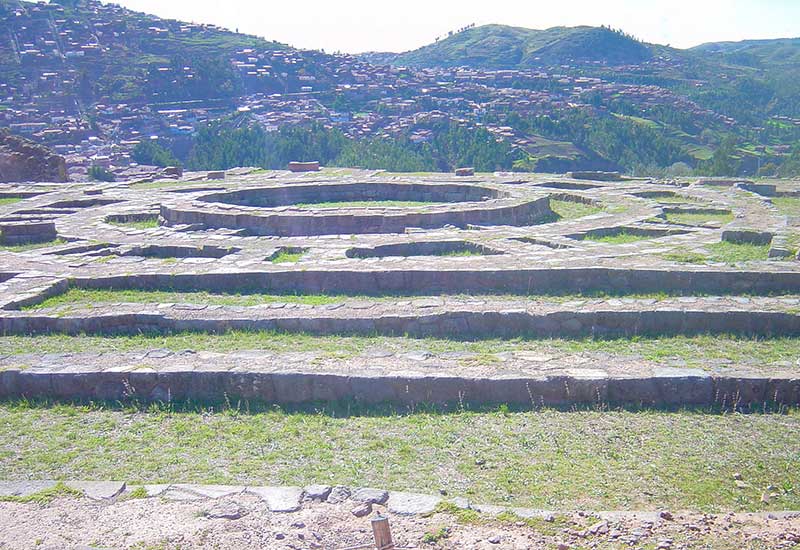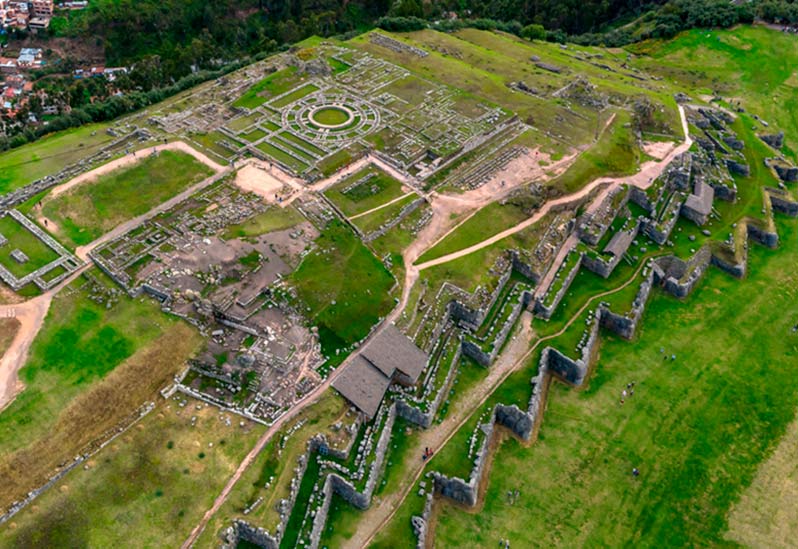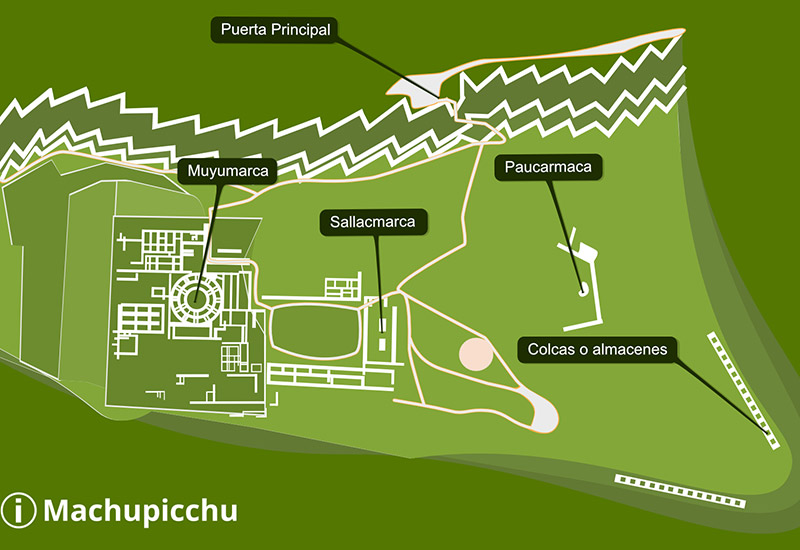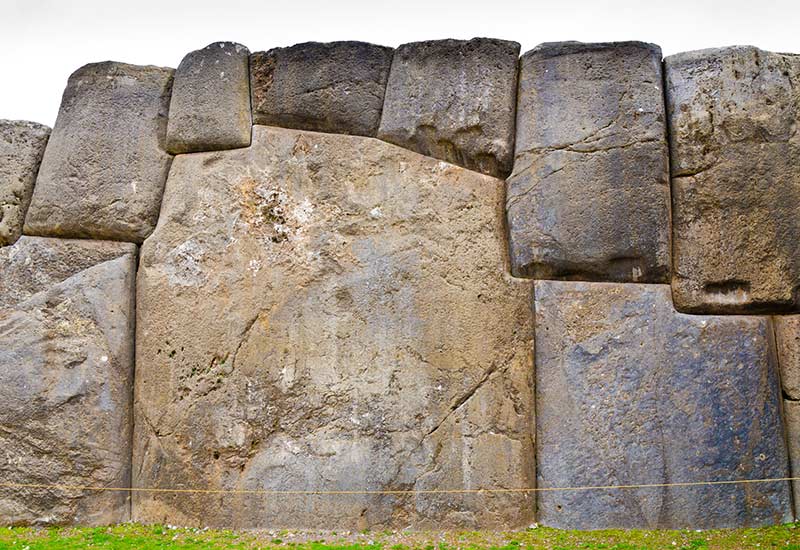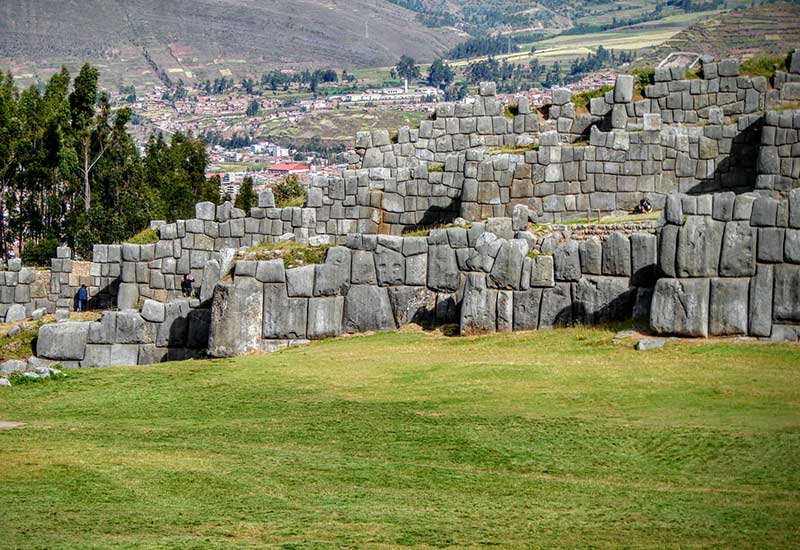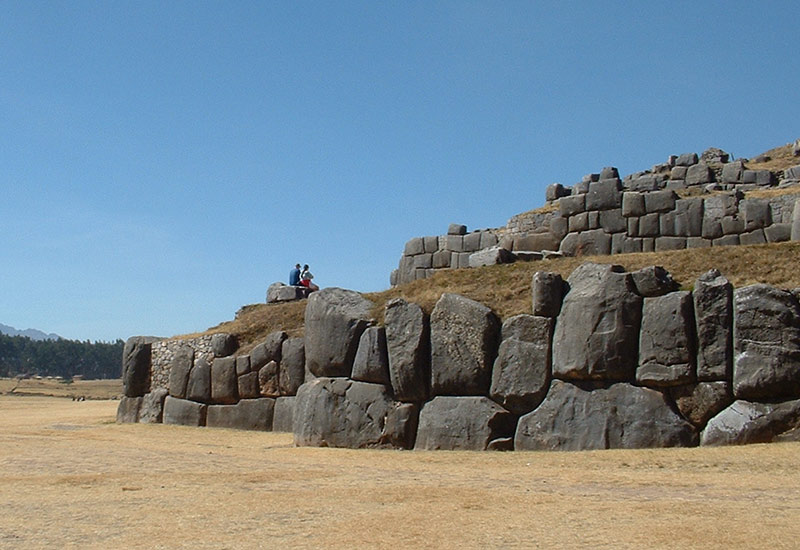Sacsayhuamán and the tower of Muyucmarca
Currently, Sacsayhuamán is one of the most visited places near Cusco. It is located only two kilometers from the Plaza de Armas of the Imperial City. In Sacsayhuamán battles were fought both by the Incas against the Chancas and later in an attempt to recover Cusco by the resistance of the Manco Inca. During this last battle and after consolidating the victory of the Spanish, they began to destroy all the religious sites of the Incas, destroying the towers and other sectors. Next, let’s learn more about these religious sectors located in Sacsayhuamán.
- Sacsayhuamán
- cougar’s head
- The towers of Sacsayhuamán
- Relationship of the head of the Puma with Muyucmarca
- Image gallery
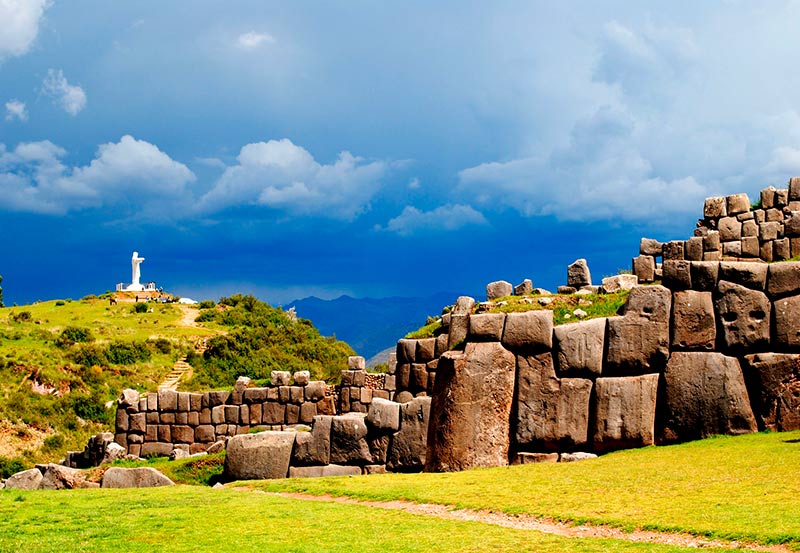
Sacsayhuamán
Sacsayhuamán
The archaeological remains that can be found in Sacsayhuamán are only 20% of what they once could have been. After the Spanish rule, little by little this enclosure was abandoned, which probably served as a ceremonial place due to the wide spaces to accommodate a large number of people. On the other hand, it has imposing zigzag-shaped platforms, these constructions are made with large stones that must be measured in tons.
Due to the presence of these large stones, it was also attributed to the function of a fortress, this idea agrees according to the records of the chronicles where Manco Inca, in an attempt to recover Cusco, sought refuge in this enclosure. During this battle, one of the best Tawantinsuyo warriors died. Cahuide, upon being wounded and seeing that the Inca resistance forces were perishing, decided to go up to the tower of Muyucmarca, and launch himself as an act of non-submission and courage, because he was aware that he could not be captured alive since they could ask for an exchange or a bounty on his head.
The constructions and order of everything that would comprise Cusco and Sacsayhuamán were directed by the Inca Pachacútec in the 15th century. Who decided that the Inca cities should have the shape of an animal? Cusco and Sacsayhuamán would form the figure of a puma. According to the Inca worldview, the puma represents everything earthly and everything that can be achieved in life. It is the protective spirit of all that is alive. The Sacsayhuamán Fortress is a test that the entire population of Tawantinsuyo managed to carry out.
The Battle of Sacsayhuamán: Probably this event took place in the year 1536, after the death of Huáscar and Atahualpa, the Tawantinsuyo empire was reduced. Manco Inca, after being fed up with the mistreatment and ridicule they made of him, decided to form resistance to the Spanish conquest. One of those battles took place at the site of Sacsayhuamán, which they used as a fortress. Unfortunately, they lost because the invaders allied themselves with chiefs of different ethnic groups, . especially with the Cañaris, the main rivals of the Huayna Cápac lineage.
Cougar’s head
As we mentioned Cusco would have the shape of a puma lying down. Sacsayhuamán would represent the head of the said animal. This is very important because it plays a lot with the spiritual zones that can be found within the body. This puma-shaped city planning was not only a whim but would obey a whole series of very important symbols to understand the Andean worldview.
The animal’s head would play an important role since great rituals were performed in this place. Not for nothing, the construction took 50 years to complete. It is estimated that it was built by more than 20,000 men. The walls reached 9 meters in height. Throughout the place, you can find water channels. All Sacsayuhuamán or the head of the puma can be divided into different sectors such as the rodders, the Inca throne, the Inca bath, amphitheaters, chicanes, and the towers, although currently, only the bases of these constructions remain, these buildings continue to be a mystery both for its form and functionality.
The towers of Sacsayhuamán
According to the chronicles of the Inca Garcilaso de la Vega, the main area of Sacsayhuamán was located on a small hill, on this hill you can find one of the three towers, which would be the most important Muyucmarca, let’s start talking about the other enclosures.
- The first of them is the Sallacmarca tower, this tower had a quadrangular shape, from where you could see the entire valley and the puma shape that the city had. It was located near the current viewpoint. This tower fulfilled multiple functions, such as sightings of enemies or the arrival of cheques by the Qhapac Ñan or announcing the arrival of a high official or the Inca army itself.
- The other tower that Sacsayhuamán had received the name of Paucamarca and adjoined the main square. At the same time, it was located near the Colcas, which is located parallel to the Sallacmarca tower. However, it was larger and probably had a sighting or storage function. This tower and the previous one cannot yet verify their real importance because the excavations are complicated throughout the area.
- The third tower is Muyucmarca, this structure is unique in all of Tawantinsuyo. Similar constructions are not registered in the entire Tawantinsuyo, that is to say, from the north of Ecuador and some areas of Colombia to the Chilean and Argentine north. In all the Inca archaeological sites there are no records of circular constructions.
The relationship between the form cougar head’s with Muyucmarca
The Muyucmarca tower seems to have an important relationship with the rest of the temples and the main deities of the Incas. It is said that this tower could store water, according to the Inca chronicler Garcilaso de la Vega. This was recently verified since several water channels come out from this place and are surely distributed throughout Sacsayhuamán. Before it was thought that the place was a solar calendar.
The important thing about this temple is that it is located in the same direction as the Coricancha, that is, they have a certain symmetry in their location with the place where they are built since they are aligned. This imaginary line that is drawn has a lot to do with the figure of the puma. The Muyucmarca tower would be located on the feline’s neck and anatomically the Coricancha would come to be located on the genitals.
The relationship between the anatomical location of the neck and the entire anatomical representation of the entire city of Cusco, together with the distribution of water channels, is truly impressive. Both anatomical and probably spiritual aspects should be studied further. Let us remember that all the Inca constructions privileged the domain of water and at the same time they distributed it safely throughout all the facilities of their cities.
In this sense, Muyucmarca could represent an important temple that somehow managed to connect all parts of the city through water channels. It is also important to highlight the large size of the tube, almost reaching a length similar to the central square of Sacsayhuamán. Unfortunately, the studies on this entire place are carried out slowly so as not to further damage the archaeological remains, we hope that soon they can shed new light on this incredible place.
By Ticket Machu Picchu – Last updated, February 24, 2023
